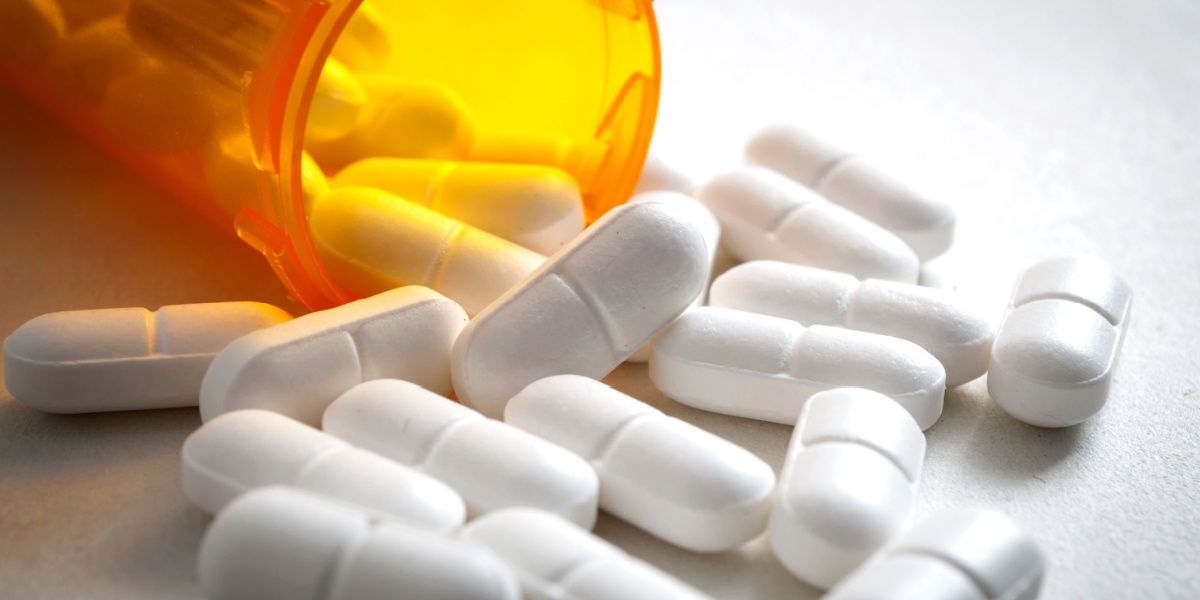Hydrocodone is a semi-synthetic opioid analgesic, used as a pain-relieving medication for severe and round-the-clock pain treatment. It is available on prescription as a tablet, capsule, or liquid solution, and in hydrocodone-only or combination products.[1]
It is also commonly misused and abused, due to hydrocone's sedating and euphoric effects. Because of its potential for abuse and dependence, hydrocodone is a Schedule II controlled substance. Discontinuing hydrocodone is likely to cause withdrawal symptoms, so tapering is advised.[2][3]
.jpg?v=1722504000)
Does hydrocodone cause withdrawal symptoms?
It is common to experience withdrawal symptoms when reducing or stopping hydrocodone use. The likelihood and severity of withdrawal symptoms is often increased when hydrocodone has been used for prolonged periods or abused, and if it is stopped abruptly. Gradual dose reductions are recommended.[4]
People taking hydrocodone, whether prescribed or illicitly, can develop tolerance and dependence on the substance, which increases the risk of withdrawal symptoms. When tolerance develops, individuals require increased doses to achieve the same effects.[3]
Physical dependence on hydrocodone becomes more likely with prolonged use or misuse, although it can develop within weeks of prescribed use. This causes the individual to become reliant on the medication, with withdrawal symptoms emerging if use is reduced or stopped.[3]
Additionally, naloxone, used to treat opioid overdose, and naltrexone, used to treat opioid use disorder, can cause the onset of withdrawal symptoms. [5]
Hydrocodone withdrawal symptoms
As with other opioids, withdrawal symptoms are likely to occur if hydrocodone has been abused, particularly when rapidly reducing or abruptly stopping use.
Common hydrocodone withdrawal symptoms include: [3][4][5]
- Agitation
- Irritability
- Restlessness
- Anxiety
- Low mood
- Rhinorrhea (runny nose)
- Muscle and joint pain
- Weakness
- Fatigue
- Nausea
- Vomiting
- Diarrhea
- Stomach pain and cramps
- Insomnia
- Sweating
- Chills
- Shaking
- Excessive yawning
- Reduced appetite
- Dilated pupils
- Increased respiratory rate
- Fast heart rate
- Cravings
In some cases, hydrocodone withdrawal symptoms can be severe or persistent and require professional intervention. For example, dehydration caused by persistent vomiting and diarrhea can occur and may be life-threatening if not treated. [6]
Hydrocodone withdrawal timeline
Hydrocodone withdrawal symptoms are likely to occur within 12-48 hours of the last dose. The time of onset can vary depending on the type of hydrocodone being used. Following the use of extended-release hydrocodone, withdrawal symptoms may take longer to emerge than immediate-release hydrocodone. [4][7]
Often, withdrawal symptoms are likely to be at their most severe after around three days and can last between one to six weeks. For some people, withdrawal symptoms can last longer, with certain symptoms continuing for several months, such as cravings and mood changes. [4][6]
The severity and duration of withdrawal symptoms can vary. Often, they are more severe following prolonged and heavy use, or if underlying mental and physical health conditions are present. [8]
Hydrocodone cessation timeline
Individuals who are prescribed hydrocodone will likely be gradually tapered off their medication by the prescribing doctor, who will monitor for withdrawal symptoms and ensure safe cessation. Those who use hydrocodone illicitly can also make gradual reductions in their usage to help prevent withdrawal symptoms. [4][8]
It is recommended to reduce the dosage every two to four days by 25% to 50%. [3] For example, someone taking 80mg per day might use the following cessation timeline:
- Day 1: 80mg
- Day 5: 60mg
- Day 9: 40mg
- Day 13: 20mg
- Day 17: complete cessation
However, individuals who experience withdrawal symptoms can make smaller reductions, pause cessation, or return to the previous dosage while withdrawal symptoms subside and begin a more gradual taper. Heavy or prolonged hydrocodone use may require tapering over a longer period to prevent severe withdrawal symptoms. This may require as little as 10% reductions every one to four weeks. [9]
Is hydrocodone safe to withdraw from at home?
It is not recommended to withdraw from hydrocodone at home, as severe withdrawal symptoms can occur that require professional intervention. It is advised to seek professional advice and treatment when coming off hydrocodone, whether it has been used as prescribed or used illicitly. [5][8]
Outpatient treatment programs can be utilized for individuals who wish to withdraw at home, in order to receive professional support and monitoring and ensure a safe detox process. Professionals can advise on gradual dose reductions, help manage withdrawal symptoms, and treat any severe effects that occur. [7]
Some people do choose to withdraw from hydrocodone at home and may do this abruptly (cold turkey). This can increase the risk of severe withdrawal symptoms, so it is not recommended. However, if this is the case, it is important to inform friends and family who can provide support throughout the withdrawal process and contact a medical professional if required. [4]
Hydrocodone detox treatment
Opioid detox treatment can be provided through inpatient or outpatient programs. Outpatient treatment will involve attending appointments for medicinal and therapeutic support and symptom management. Inpatient treatment, such as at a rehab facility, can provide consistent monitoring and treatment of withdrawal symptoms, with interventions such as therapy, group support, holistic approaches, and medication. [5][8]
Medications commonly used during hydrocodone detox include: [4][5][8]
- Methadone or buprenorphine: Opioid agonists, such as methadone and buprenorphine, are used in replacement of hydrocodone. They can help with detox as they work similarly to hydrocodone, causing less of a euphoric effect. This can reduce the severity of withdrawal symptoms and cravings and help individuals begin to make improvements in their psychosocial functioning.
- Clonidine: Helps to reduce withdrawal symptoms such as anxiety, sweating, diarrhea, vomiting, rapid heartbeat, and increased blood pressure.
- Benzodiazepines: Help to reduce withdrawal symptoms such as agitation, anxiety, and insomnia.
- Loperamide (Imodium): Helps to reduce diarrhea.
- Metoclopramide: Helps to reduce nausea and vomiting.
Interventions that can be commenced during or following detox to provide ongoing support include: [1][4][7][8]
- Psychotherapy and psychosocial interventions: To help improve quality of life and functioning, such as housing, finances, employment, and relationships; manage emotional distress and underlying mental health conditions; manage cravings and triggers; and help prevent relapse.
- Group therapy or support: Including 12-step programs such as Narcotics Anonymous, to provide a support network, reduce the risk of relapse, and promote abstinence.
- Holistic therapies: Including nutritional counseling, exercise, mindfulness, and yoga, to improve general well-being, reduce withdrawal symptoms, and help the recovery process.
- Medications: Ongoing maintenance treatments, such as methadone, buprenorphine, or naltrexone, to maintain abstinence and improve recovery.


-guide-detail.jpg?v=1756808659)

